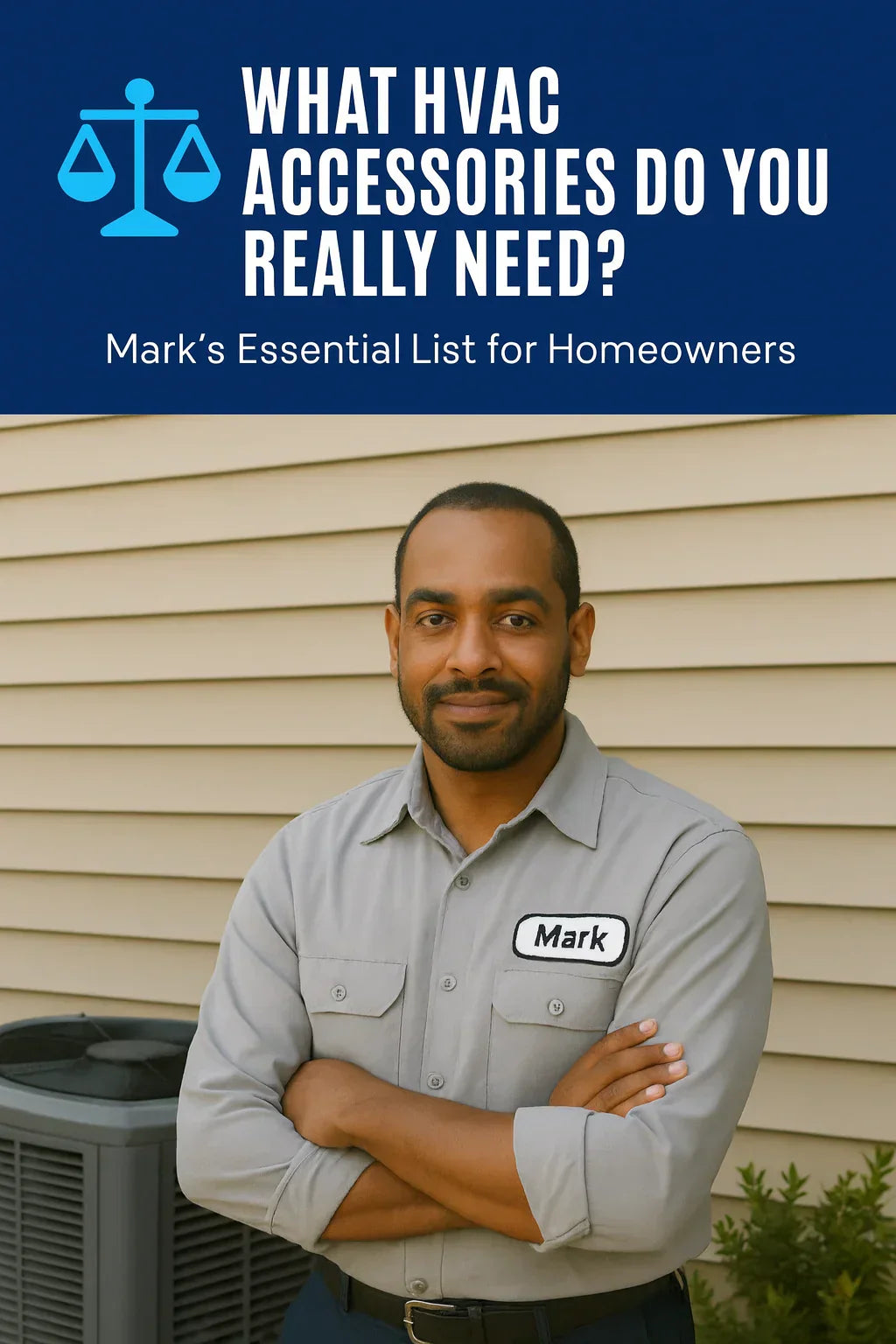As someone who's spent more than a few weekends tinkering with HVAC systems, I’ve learned that the right accessories are like trusty hand tools—they don't just help get the job done; they make it smoother, safer, and more efficient. Here's the essential list I recommend every homeowner have on hand to keep their HVAC system in top shape.
1. Smart or Programmable Thermostat — The Brain of Your System
A smart or programmable thermostat is, hands down, the most transformative upgrade for energy savings—and comfort. These devices learn your schedule, let you adjust settings via apps, and optimize heating/cooling without constant tweaking.
-
Smart thermostats can cut utility bills by roughly 10%
-
Major options: Ecobee Smart Thermostat Premium (best overall), Google Nest Learning Thermostat (sleek and intuitive), Amazon Smart Thermostat (budget-friendly), Honeywell T9 (multi‑room sensing)
These devices eliminate inefficient manual adjustments—like switching your thermostat up and down all day—which professionals say is a big energy-waster
HVAC pros reveal the 7 costly mistakes homeowners always make in summer
2. High-Quality Air Filters — Your System’s First Defense
Air filters are the unsung heroes of clean air and efficient operation. They trap dust, pollen, and airborne debris—keeping your system clean and your air healthy.
-
Filters come in different sizes and MERV ratings—higher isn't always better; balance efficiency vs airflow.
-
Regular replacements are critical. Not swapping filters can force your system to work harder and tank your energy bills
3. Drain Line Float Switches — Your Waterproof Safety Net
These simple but vital devices protect your home from the mess—and expense—of an overflowing condensate drain.
-
Most HVAC systems require at least one float switch by code, but I recommend redundancy: primary pan, inline, and backup pan switches, swapped every ~5 years for reliability
That peace of mind can save you from water damage and emergency repairs.
4. Air Purifiers & UV Germicidal Lamps — Breathe Cleaner
Want better air quality? Add an air purifier or UV lamp to your HVAC ductwork.
-
Air purifiers filter allergens, pollutants, and pathogens—making a noticeable difference in dust levels, allergy symptoms, and general air hygiene HVAC Tactician.
-
UV germicidal lamps go a step further: they zap bacteria, mold, and viruses, helping keep your coils and ducts healthier long-term
5. Whole-House Humidifier/Dehumidifier — Balance Your Air
Humidity isn't just comfort—it’s health. Too dry? You’re dealing with cracked lips and static. Too moist? Mold and musty smells creep in.
-
Humidifiers add moisture in dry climates or winter. Dehumidifiers remove excess moisture, especially essential in humid zones
Adding one helps regulate comfort and air quality effortlessly.
6. Zoning Systems & Programmable Vents — Customized Comfort
If your home layout is uneven—like sunny rooms upstairs, cooler spaces downstairs—zoning zones the control.
-
Zoning systems separate your house into independently controlled areas, saving energy by not heating or cooling unused spaces
-
Programmable vents complement this by automatically opening or closing airflow based on schedule or occupancy
Your HVAC tracks exactly where comfort is needed, saving money and boosting control.
How to Pick the Right Accessories for Your HVAC System
7. Surge Protector — Safeguard Your Investment
A power surge can fry your HVAC electronics. Installing a surge protector is a low-cost line of defense that can prevent major damage Jackson & Sons.
8. Duct Sealing & Insulation Wraps — Seal the Leaks
Any leaks or poor insulation in ductwork wastes energy—making your system work harder to maintain the set temperature.
-
Proper duct sealing can reduce airflow loss and improve heating/cooling efficiency
-
Use fire-rated sealant tape (not basic “duct tape”) and insulation wraps to minimize energy leaks.
9. Essential Service Tools — Empower Your DIY Streak
Having the right tools lets you tackle basic maintenance safely and smartly.
-
Think multimeters (electrical checks), refrigerant gauges, vacuum pumps—for accurate diagnosis and upkeep
With these in your garage, routine tasks become simpler, safer, and cheaper.
10. Float Switches (Revisited!) — Double-Check Safety
Yes, worth saying again. Make sure your drain pan and redundancy devices are in place—and regularly swapped—to prevent surprises.
Bringing It All Together: Mark’s DIY HVAC Kit
Here’s what I usually keep in my “starter” HVAC accessory kit:
| Accessory | Why It’s Essential |
|---|---|
| Smart Thermostat | Energy savings, automation, convenience |
| High‑Quality Air Filters | Clean air, system efficiency |
| Drain Line Float Switches | Protects against condensate overflow |
| Air Purifier / UV Lamp | Healthier indoor air, cleaner system |
| Humidifier / Dehumidifier | Balanced moisture, comfort & health |
| Zoning Controls + Vents | Targeted comfort, energy savings |
| Surge Protector | Protects electronics from power spikes |
| Duct Sealing & Insulation | Enhances airflow and efficiency |
| Service Tools | Enables effective DIY maintenance |
Why These Accessories Matter — Final Thoughts
-
Cost Savings: Smart thermostats alone can lower your energy costs by ~10% Others—like filters, duct sealing, fans—slash inefficiencies even further Homes and Gardens.
-
Comfort & Air Quality: Clean filters, proper humidity, and purifiers improve your air—and your well-being.
-
Safety & Prevention: Float switches and surge protection guard your home from water and electrical damage.
-
Control & Convenience: Zoning, smart devices, and smart vents put comfort exactly where and when you want it.
Mark’s DIY To-Do at a Glance
-
Choose and install a smart or programmable thermostat.
-
Stock up on proper-sized filters and set reminders.
-
Install and regularly replace drain line float switches.
-
Add air purification to your system.
-
Balance humidity with a whole-house humidifier or dehumidifier.
-
Implement zoning and smart vents if rooms vary in temperature.
-
Add a surge protector to your system’s electrical circuit.
-
Seal and insulate ducts with proper materials.
-
Keep handy service tools for routine checks and maintenance.
In the next topic we will read more about: Choosing the Right Thermostat: Smart, Programmable, or Manual?







